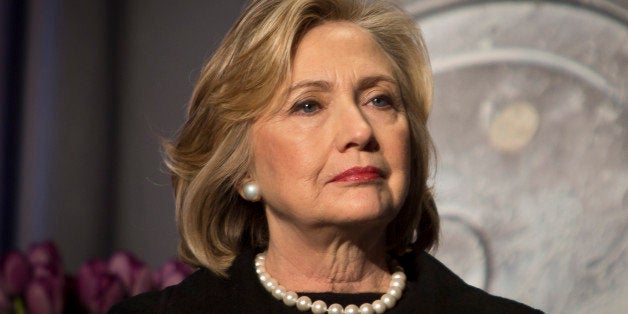
Most of the people who have direct dealings with the former secretary of state seem to regard her very highly, certainly not in the bottom 3 percent of the population. The same could be said about former Florida governor and likely presidential candidate Jeb Bush. Erskine Bowles, the former Clinton chief of staff and patron saint of the deficit hawks, also would not usually be put in the bottom 3 percent.
What these three people have in common is that they have all served stints as directors on corporate boards. Hillary Clinton served on the board of directors of Walmart from 1986 to 1992. Bush served on the boards of Tenet Healthcare and Rayonier. Bowles sat on the boards of Morgan Stanley, General Motors, and some companies that have not needed government bailouts.
Clinton, Bush, and Bowles are among the thousands of prominent and successful individuals who have sat on the boards of major corporations. It's good work if you can get it. The pay is typically several hundred thousand dollars a year in exchange for showing up at six to 10 board meetings.
This is not a job where poor performance carries much of a price. Erskine Bowles was on the board of Morgan Stanley in 2008, when the Fed had to turn it into a bank holding company on an emergency basis to save it from bankruptcy. Bowles is still there today as the lead director.
The reason that the rest of us should care about corporate directors is that these are the people who determine the pay of corporate CEOs. As CEO pay has rocketed from being 20 to 30 times as much as the pay of an ordinary worker back in the 1970s to being 200 or 300 times as much today, it was the corporate directors who signed the contracts. They were the ones who said it was necessary to keep giving CEOs ever higher pay, ostensibly in the interests of the shareholders.
As a practical matter, directors are likely to feel far more allegiance to the CEOs and other top management than to the shareholders, whom they are supposed to represent. Typically top management is responsible for selecting candidates for directors. This usually means that the directors are inclined to return the favor in the form of large paychecks. After all, it is not their money.
Shareholders can, in principle, vote out directors, but as a practical matter it is rarely done, since it is difficult to organize among shareholders. This leaves a cozy arrangement where the directors and CEOs effectively scratch each other's backs and CEO pay goes ever higher.
This doesn't just lead to exorbitant pay for top management in the corporate sector. Outlandish CEO pay leads to high six- and seven-figure salaries for top executives at universities, hospitals, and even charities. After all, these people could get even more money working in the corporate sector.
This is where the 3 percent comes in. One of the provisions of the Dodd-Frank financial reform bill required that CEO pay packages be submitted to a non-binding "Say on Pay" vote of shareholders on a regular basis. Since it is difficult to organize among shareholders, these packages are almost always approved, but a bit fewer than 3 percent are voted down.
There is a simple way to put some teeth into Say on Pay. Suppose directors forfeited their pay whenever a CEO pay package was voted down. In principle this could be required by the federal government for all corporations. It could also be required by a state government for the corporations chartered in the state. And corporations could adopt it as a voluntary policy. After all, it shouldn't be asking too much of directors to subject themselves to the risk that shareholders will view them among the bottom 3 percent in terms of containing CEO pay.
This sort of provision would help create some symmetry in the directors' view of CEO pay. As it stands now, there is little reason for directors ever to oppose raising CEO pay. But the risk of losing their annual stipend should get the directors' attention. If a few boards agreed to this rule or had it imposed on them and then lost their pay due to a vote of shareholders, it is likely that all directors would think more carefully about adding another $500,000 or $1,000,000 to the CEO's pay package.
This sort of provision may not be enough to contain CEO pay, given the current state of corporate governance, but there doesn't seem to be much of a downside to trying. And it gives public the wonderful opportunity to ask prominent directors like Clinton, Bush, and Bowles whether they are worried about being in the bottom 3 percent.
